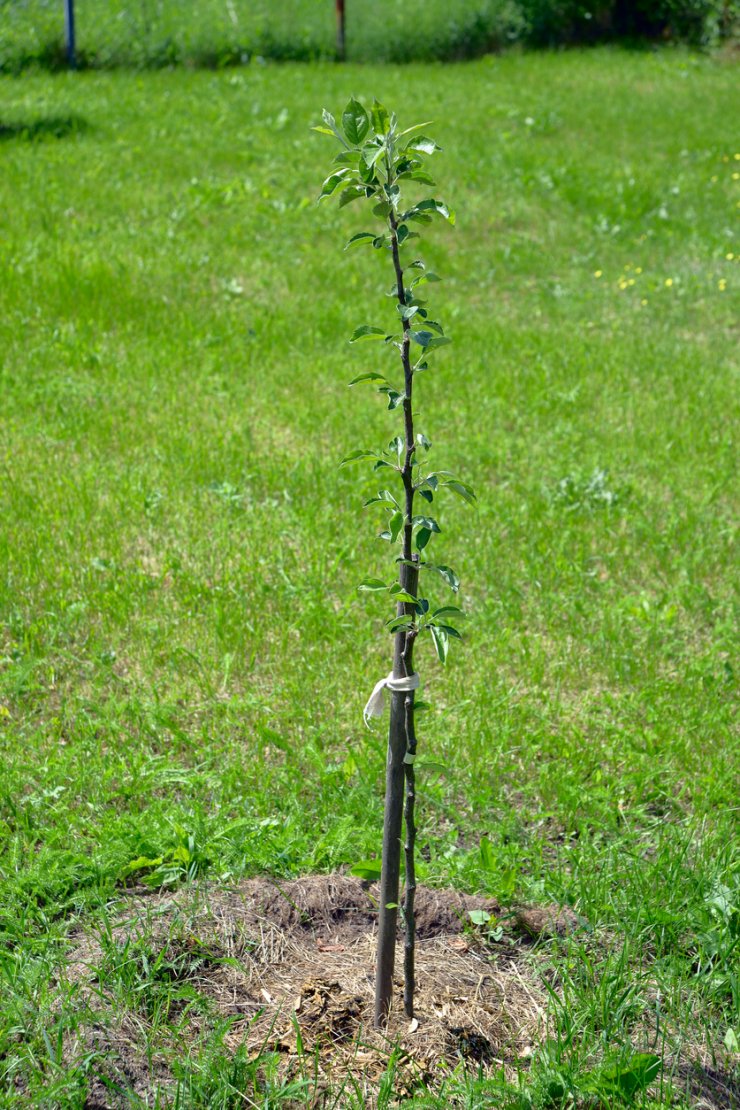
Two-year-old pear sapling.
So, maybe you’re a really patient gardener and you’re thinking of growing your own pear trees from seed. A word of advice? Don’t. Pears do not reproduce reliably from seed. Sometimes they do; sometimes they don’t. Why take the chance? Plus, you’ll have a much longer wait to actually get pears—and even then, they may not even be edible.
The best way to get the pear tree you want is not to pull the tail ends of your Bosc pear from your compost bin and stick it in the ground. For a pear tree that will actually produce the pears you want, you need a young sapling that has been nurtured for just that purpose. And when we say young, we mean a tree that’s a year or two old (no older, or they don’t respond well to training).
Pear trees are propagated through a process called grafting. Growers begin with a reliable rootstock (just like it sounds—a root), usually from a quince tree; this makes the trees grow smaller, which is good news for home gardeners. A cutting of a particular pear cultivar is grafted to the rootstock; this is the scion. There are lots of techniques for grafting; they all include cutting a slit into the rootstock and fitting the scion in. Sometimes growers wrap the joined pieces with twine to encourage them to grow together. That’s the beginning of a pear tree.
The good news? Unless you’re really into the science of rootstocks, you don’t have to worry about it. By the time you get to the nursery to pick out your trees, all that work will have been done for you—last year or the year before. But do be sure to ask what kind of rootstock they used—it influences the ultimate size of your tree.
When you plant your saplings, make sure the scar from the graft is at least 2 inches above the soil level. You want to make sure your saplings continue to grow from the graft of the cutting and the rootstock, not the rootstock. If you see rootstock growth below the graft, prune it off immediately.
Not all horticulturists agree on when is the best time to plant new pear trees. Some say you should plant in the early fall while the soil is still warm, or by early winter at the latest. Others say you should plant in early to mid-spring, when the soil is warming up and most of the threat of frost is past. Check with your local extension center for advice on how best to set your pear tree saplings up for success.
Have you tried growing pears from seeds, saplings, or both? Which method do you prefer—and why? Please tell us how you get your pear trees started.


 Previous
Previous

